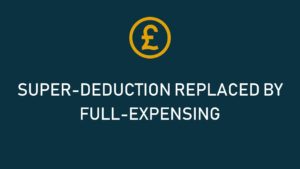Taxation is the most important source of income for governments all around the world and quite essential for living your life in a civilization. Most of us might disagree, but we still must pay taxes for our incomes, properties, the things we buy, capital gains taxes, etc.
There are three main types of taxes that we are going to discuss here and understanding just how these works can give you an idea about the ways your money gets taxed. There are a lot of people that are paying taxes unknowingly and we want to empower you to take greater control of your finances by explaining progressive, regressive, and flat taxes and their pros and cons as compared to other taxing systems.
Progressive tax
This taxing system involves implying a tax of high value on people with high income and implying a tax of a lower value on people with medium or low income. In simple words, progressive tax is a tax system that increases rates just as your income increases. It follows a structure of an accelerating schedule. Therefore, high earners pay more tax than low earners. Everybody pays tax according to how much they earn.
Examples of progressive tax:
- Investment income taxes – impact those with excess money that save and engage in investment
- Tax on interest earned – passive income that is earned from interest
- Rental earnings – impact those who invest in property
- Estate tax – impact assets of the deceased if it is above the amount set forth by the government
- Tax credits – awarded to elderly and disabled tax credit, child tax credit, or retirement savings contribution
Regressive tax
You might have heard billionaires paying only 5% in taxes, whereas low-income workers paying more than 20%. This is regressive tax where low-income individuals pay a higher percentage of their incomes in taxes, than high-income individuals. In simple words, this is a type of tax that is imposed on everybody who must pay irrespective of their age, status, income, or ability.
This can be quite a burden on people who are already struggling with their low income, whereas individuals with higher income have it easy to pay the regressive tax because of a fixed amount of tax. This can lead to inequality and political unrest.
Examples of regressive tax:
- Sales tax – an amount added to the cost of a product or service when purchased by a consumer at a retail
- Property tax – tax on the value of a property
- Excise tax – tax paid by the manufacturer of goods during the manufacturing process
- Tariffs – tax on imports and exports
- Government fees – tax for using government services (e.g., road tax)
Flat tax
The basic definition of a flat taxing system is that the same rate of tax is applied to all income levels. It shares some perspective with the regressive tax but there are some differences between the two.
It is said that flat tax (also known as proportional tax) encourages citizens to earn more, save more, and invest more without paying a lot of taxes. This is great for the economic growth of a country. It also simplifies the tax code and is perceived as fair.
Flat tax is simple, everyone pays the same amount of tax at the same rate. However, it is also a burden on low earners as they must pay the same amount of tax as high earners without maintaining their standards of living.
Examples of regressive tax:
Sales tax – a fixed percentage of the product or service sold (except food to reduce burden on those who cannot afford it). Rich or poor, everyone pays the same amount of sales tax.
Are you looking for an accountant to help you with your taxes? Get in touch with Finchley Business Services for their leading source of information in tax and accounting for small businesses, start-ups, sole traders, contractors, and more!









